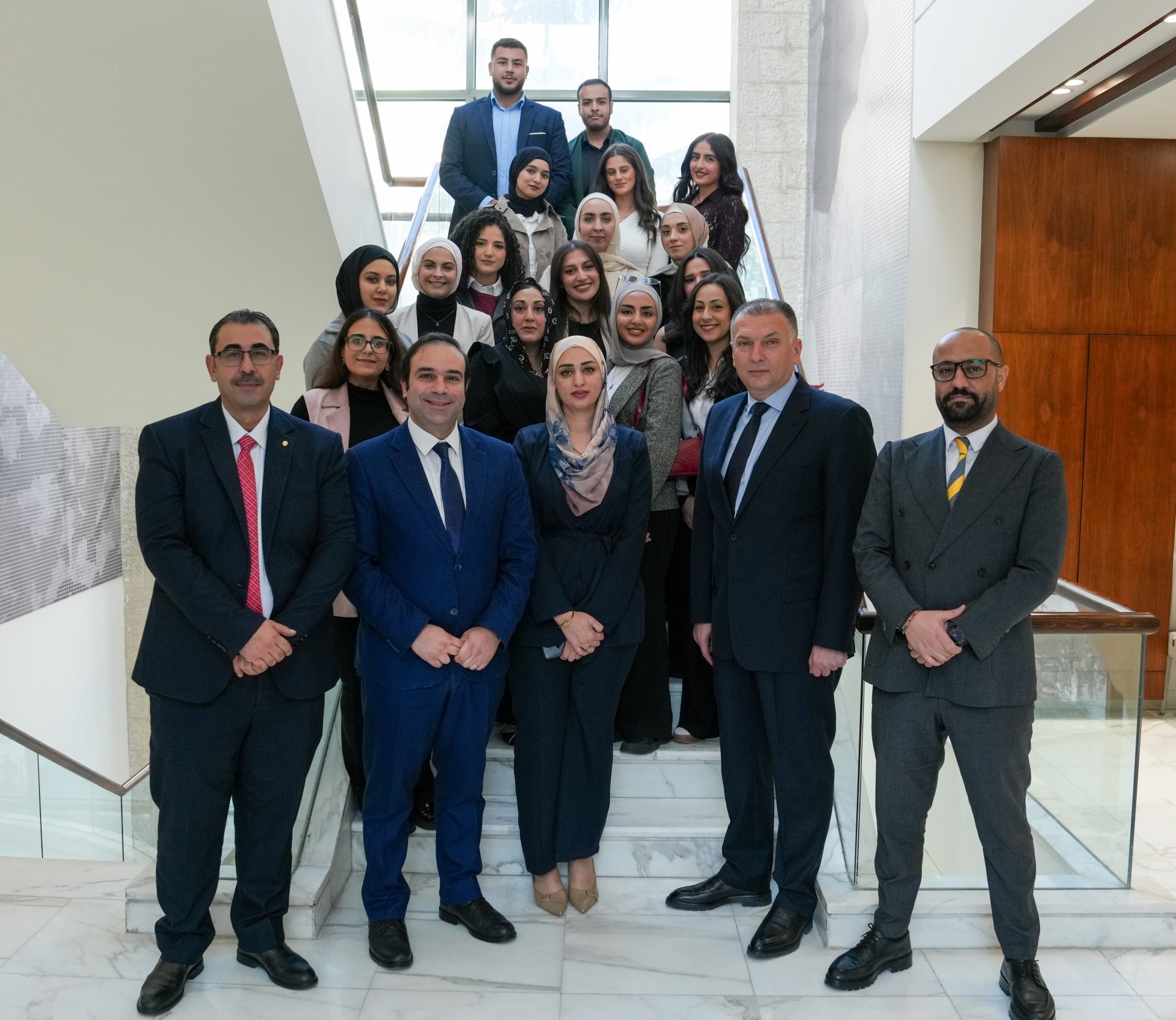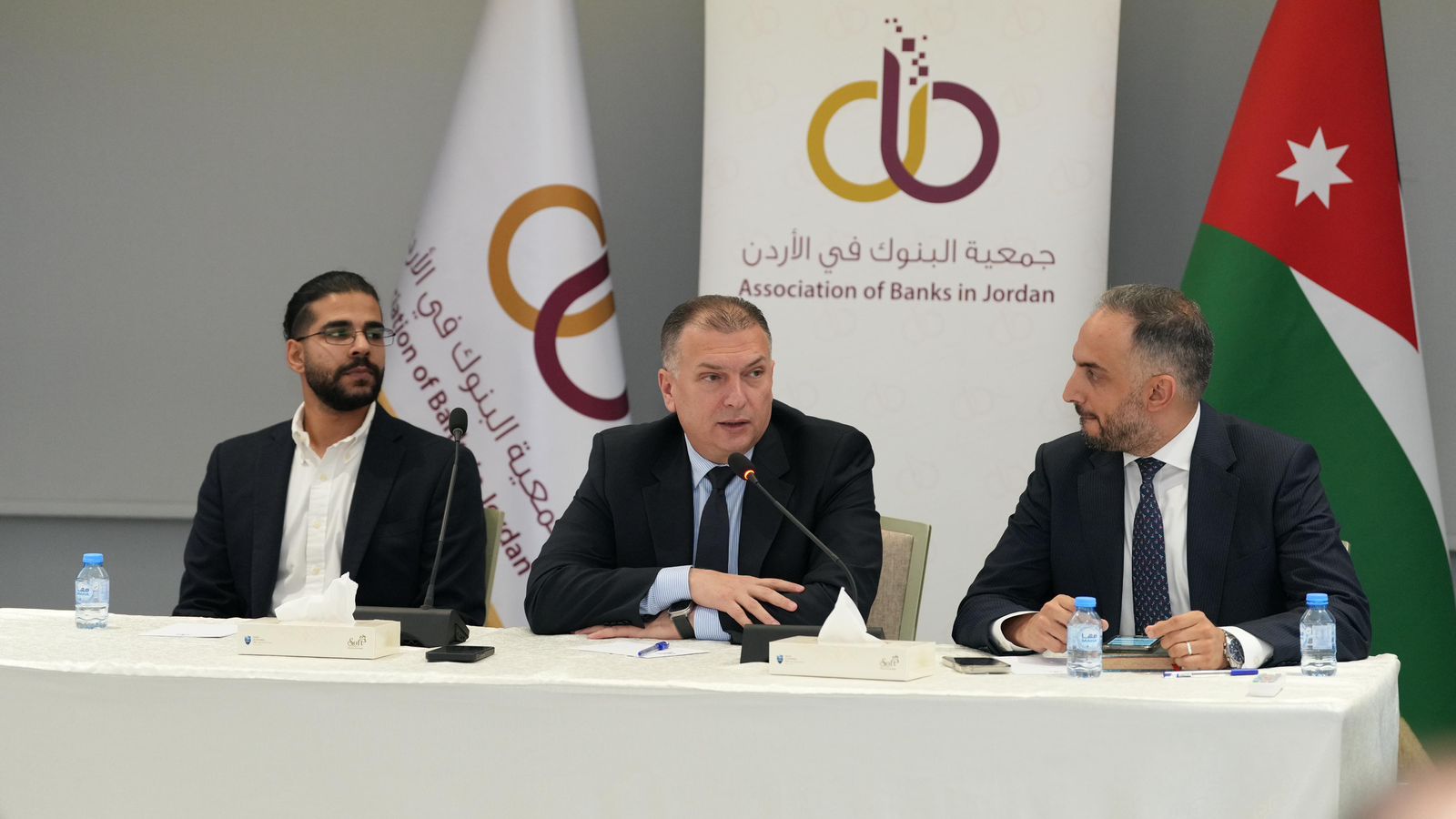
Amman, February 8, The Financial and Economic Committee of the Senate headed by senate Jamal Al-Sarayrah met today, Monday, with the Director-General of the ABJ Dr. Maher Al-Mahrouq.
Al-Mahrouq reviewed in the meeting the most important indicators of the Jordanian banking sector noting that bank’s assets grew by 5.3% during the first 11 months of 2020 reaching 56.55 billion Dinars. In addition, bank’s deposits grew by 3.1% reaching 36.4 billion Dinars.
He said that credit facilities granted by banks rose by 6.1% to reach 28.7 billion Dinars at the end of November 2020 stressing that credit facilities granted to the private sector constitute more than 91% of the total facilities.
Al-Mahrouq confirmed that bank’s interest rates witnessed a remarkable decrease during 2020 including interest rates on credit facilities and treasury bonds.
He stated that despite the Corona pandemic clear effects on the economy’s various sectors, the indicators of the bank’s financial strength confirm the sector’s safety, strength and ability to deal with the repercussions of the pandemic without a significant impact on these indicators noting that the capital adequacy ratio reached 19.7% in the in the first half of 2020, the liquidity ratio was 129% and the non-performing debt ratio was 5.4%.
Al-Mahrouq presented the banking sector performance during the Corona pandemic as banks pumped additional financing into the economy by raising credit facilities granted at a value of 1641 million Dinars during the first 11 months of 2020.
Banks also implemented the Central Bank’s program to support small and medium companies as 450 million Dinars were granted, from which 4,922 companies benefited, of which 178 million Dinars were directed to finance the salaries of more than 84,000 employees in addition to extending the grace period for the beneficiaries to the end of 2021. 237 million Dinars were granted through this program to support and finance the economic sectors benefiting 271 companies of which 61 million Dinars were allocated to finance the salaries of more than 47 thousand employees.
Al-Mahrouq said that banks reduced the interest rates on the existing facilities as of May by 150 basis points on the facilities of individuals, retail customers and small and medium-sized companies. More than 400,000 customers benefited from this reduction, which had a tangible positive impact on all segments of society, and hastened to postpone the installments of individual loans with the value of the postponed installments amounting to about 800 million Dinars during the first ten months of 2020.
He pointed out that banks worked on restructuring and scheduling facilities for companies affected by the repercussions of the pandemic with a value of more than 3 billion Dinars, and that they financed the Jordanian treasury with more than 2.2 billion Dinars by subscribing to government bonds.
With regard to the ABJ most important observations on the 2020 budget, Al-Mahrouq showed the low expected growth rates for 2021 as the expectations of the World Bank indicated an expected growth of about 1.8% while the government assumed that growth was around 2.5%.
Al-Mahrooq indicated that the income and profit tax estimates for 2021 are relatively exaggerated, and it is expected that the actual collections in 2021 will be lower due to the impact of the pandemic on the profits of companies and individuals which will appear in 2021.
Al-Mahrouq said that the increase in the growth rate of public expenditures amounted to 6% as current ones witnessed a 4% growth while capital expenditures witnessed a growth of about 24.5%. Yet, it is still not enough to cause real growth. Capital expenditures mostly include current and not capital ones such as workers compensation, subsidies and other grants. At the level of 2021 financing budget, which shows that the sources of funding depend by 80% on internal sources, to be matched by repayments or internal uses of 59%, and therefore the expected net increase in the public debt for 2021 will be About 2467.3 million Dinars, of which 1598,3 will be the new net internal borrowing, while the remaining 869 million will be the new net external borrowing. These amounts will be used to pay the budget deficit of 2055 million Dinars in addition to paying other obligations amounting to 412 million Dinars.
In this context, Al-Mahrouq indicated that the surplus liquidity in the banking system amounted to about 2,585 billion Dinars on February 4th. If the natural growth in deposits during this year of about 3-4%, is taken into account as in the previous two years, this means that the increase in deposits will range between 1 billion and 1.5 billion Dinars.
He said that there are payments for the installments of the facilities granted in advance that are due during 2021, and if all the previous points are taken into account, the banks will have a large surplus liquidity that far exceeds the requirements for treasury financing (1.6 billion according to the financing budget for 2021) and financing growth in credit facilities (the growth until November 2020 was about 6.1% which is equivalent to 1640 million Dinars).





